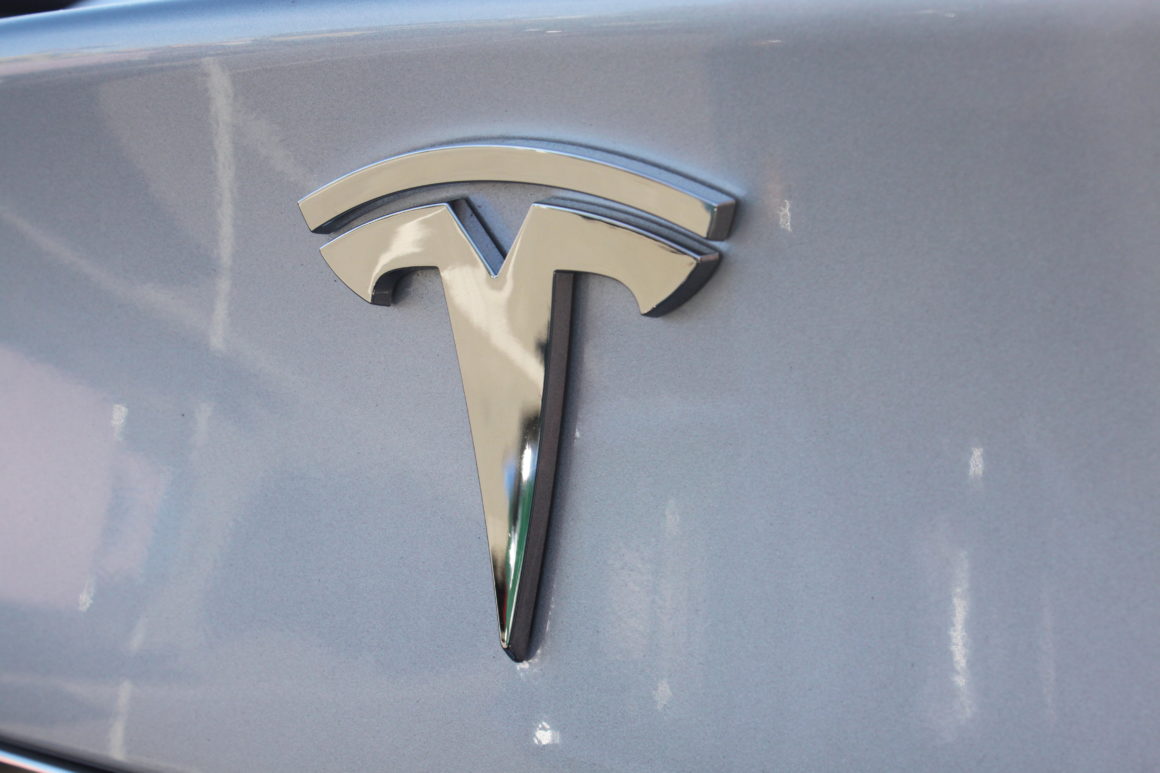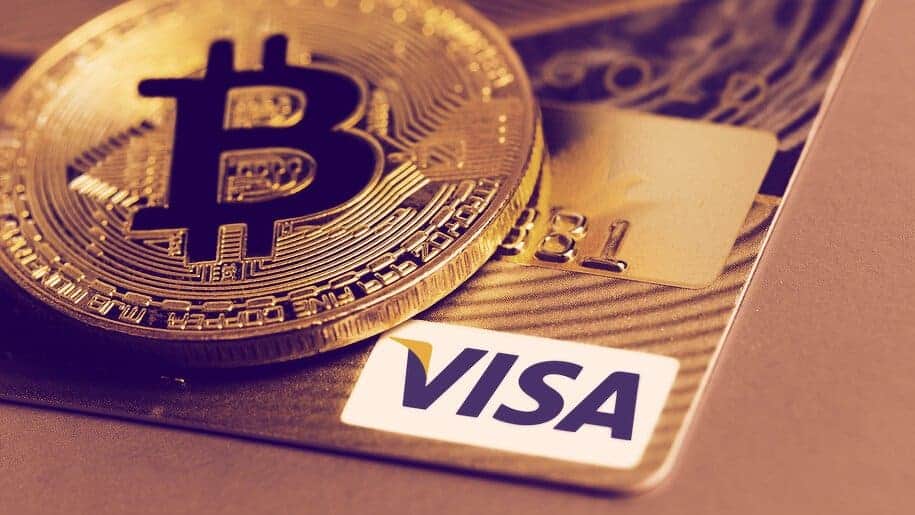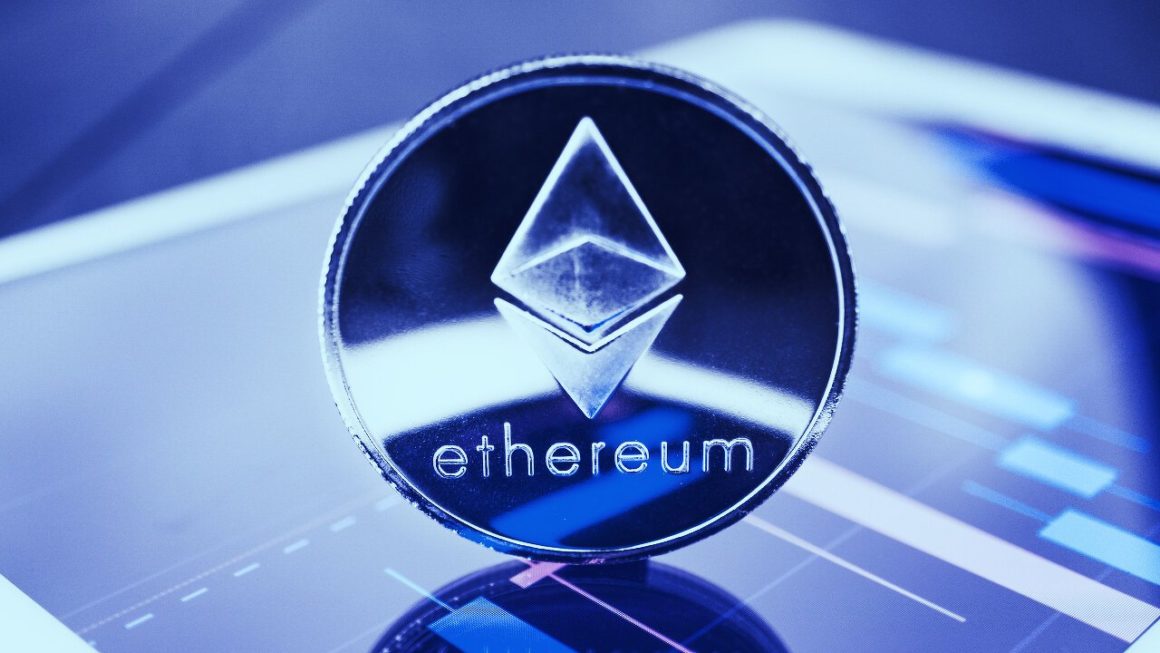In this issue
- Elon Musk and Tesla skyrocket bitcoin prices to new stratosphere
- First Boulevard neobank soon to offer Visa crypto services
- Chicago Mercantile Exchange launches ETH futures
- DeFi shrugs off YFI attack
- Ripple XRP finds refuge in Japan
- China spreads lunar new year cheer with many more DCEP red packets
From the Editor’s Desk
Dear Reader,
Kung Hei Fat Choy.
Happy Year of the Ox to one and all, and what a bull run it is to kick off a year of prosperity when it comes to innovation.
If you haven’t heard (yet), Tesla disclosed in an SEC filing this week that it had purchased US$1.5 billion in bitcoin. The move was approved by its board of directors, which consist of names you might know, like Larry Ellison and James Murdoch. More important, you should note the representation of Corporate America that just approved the move into bitcoin, including Oracle, Walgreens, Kellogg, Twenty-First Century Fox, well… you get my point. The signal is clear. Miners are working hard right now to unlock more bitcoin to meet demand. And the demand is increasingly coming from institutions.
Pre-2008, institutional demand for non-fiat digital currency would have been the stuff of fiction. Bitcoin was just a figment of Satoshi Nakamoto’s imagination. But here we are — in 2021, the crypto market value has now surpassed the US$1 trillion mark.
Welcome to the future. It’s here.
Until the next time,
Angie Lau,
Founder and Editor-in-Chief
Forkast.News
1. Tesla’s bitcoin bet skyrockets BTC to new ATH

Image: Jeremy, CC BY 2.0, via Wikimedia Commons
By the numbers: Tesla — over 5,000% increase in Google search volume.
Elon Musk and Tesla propelled bitcoin prices to a new all-time high of US$48,003 this week as an SEC filing revealed that Tesla had purchased US$1.5 billion worth of bitcoin back in January. Tesla’s bitcoin investment is 0.18% of the company’s US$818.4 billion market capitalization and 0.81% of Musk’s estimated net worth of US$185 billion. Bitcoin is trading at $47,280 as of this publishing time.
- The filing states that the company had US$19.38 billion of cash and cash equivalents with US$6.76 billion of those holdings in Canadian dollars, Chinese yuan and euros at the end of 2020.
- The filing also states that Tesla will be looking to accept bitcoin as payment for its products in the near future.
- After Tesla’s bitcoin revelation, former Goldman Sachs executive Gary Black announced via Twitter that he has exited his Tesla positions.
$TSLA has always been higher risk, but investing $1.5B in #Bitcoin makes it more risky:
— Gary Black (@garyblack00) February 8, 2021
1/ Missed 1Q non-GAAP EPS est by 25% ($.80 vs $1.03 est)
2/ Didn’t give FY’21 deliv guidance, and instead reiterated 50% L/T vol growth goal
3/ 4Q EV share (19.6%) and Auto GM % disappointing
Forkast.Insights | What does it mean?
In last month’s Forkast.News interview with Changpeng Zhao, CEO of Binance, CZ said this: “I wouldn’t be surprised if in a few months [Elon Musk] announces that, finally, Tesla owns, I don’t know, how many bitcoins. That’ll be really good for the industry. I think it’s going to happen sooner or later — maybe this year, maybe next year. Who knows?”
So why is it good for the industry?
Elon Musk has never shied away from first-mover advantage. As an original member of the PayPal mafia, he embodies the spirit of entrepreneurialism and the anti-establishment, even now at the helm of Tesla and SpaceX. Today he is the new establishment. But more than that, he is an influencer of both Wall Street and Main Street. With the tweeting power equal only to a certain former President, Musk commands attention — sometimes even with just a simple “#bitcoin” update to his Twitter profile. And with a cool US$1.5 billion of the company’s cash reserves now invested in bitcoin, Tesla joins the ranks of the growing number of U.S. corporations doing exactly that.
It may seem counterintuitive for the more corporate-minded, as to why one would park cash reserves in one of the most volatile alternative assets around. Of course, if you’re sitting on cash, you might be concerned about U.S. Treasury Secretary Janet Yellen’s proposed US$1.9 trillion stimulus to get to “full employment,” and if you’re going to heed former Treasury Secretary Larry Summer’s warning of hyperinflation, investing a small percentage of your corporate treasury in a finite asset class (only 21 million bitcoin will ever be mined), you might be pushing an SEC filing soon, too.
Tesla could be the fulcrum, the tipping point for others in the S&P 500 to put a percentage or two of its treasury into bitcoin. Who’s next? Investment bank RBC Capital Markets suggests that Apple should be next by building a crypto exchange within its iPhone Wallet. PayPal is already in the game, giving millions of its users around the world easier access to buying and holding crypto. Tesla opens the door a little bit wider, and if Apple or others also see an advantage to leveraging their legions of users and providing a gateway to this new demand for bitcoin and other cryptos, it will bring a tsunami of liquidity that will drive up the price of bitcoin even more.
2. First Boulevard partnering with Visa to empower Black communities

By the numbers: First Boulevard— over 5,000% increase in Google search volume.
Visa announced it would partner with First Boulevard — a digital “neobank” for the Black community launched in July 2020 after George Floyd’s horrific killing by police — to pilot Visa’s new suite of crypto APIs (applications programming interfaces) that would allow customers to buy, trade and hold digital assets in Anchorage, a digital assets exchange with a national bank charter. The pilot will launch later this year.
- “By prioritizing partners like First Boulevard, Visa aims to level the playing field when it comes to access to new technologies,” Visa said in a statement. The digital payments behemoth also emphasized “the company’s commitment to closing the financial gap in the Black community.”
- “The First Boulevard mission is to help Black America build wealth,” said Donald Hawkins, president and CEO of First Boulevard. “We are thrilled to partner with the leader in digital payments, Visa, and leverage their crypto APIs to provide another channel for the Black community to access crypto as a new asset class that can help build Black wealth.”
Forkast.Insights | What does it mean?
How far bitcoin has come. How far we’ve come.
The promise of bitcoin, and the underlying technology of blockchain, has always been to remove the intermediaries and empower peer-to-peer transactions. To create a value chain that preserves as much value between the buyer and seller, without having to carve out fees to the middlemen. So when bitcoin is increasingly seen as a way to combat racial discrimination by retail banks to the Black community, that can also scale adoption.
Financial discrimination is real (just ask Apple co-founder Steve Wozniak and his wife) and it is a historic problem with centralized finance. But because cryptocurrencies like bitcoin are permissionless (anyone can use it subject to know-your-customer regulations) and anyone can buy it, for the Black community that’s immediate access to an asset class that could return value in the long term. In some ways, it could be easier to buy crypto than buying shares in a company.
Simplistic as it may seem, access to money provides the opportunity to grow wealth. When you restrict access to money and deny other economic opportunities to certain groups, that group loses the ability to grow wealth. It is this dynamic that bitcoin could change. Decentralized and equal-opportunity access to wealth via cryptocurrencies.
Reddit boards are lighting up over shared stories of newfound crypto wealth. Some are paying off student loans, others are saving up for small businesses. Small in some cases, but significant nonetheless.
3. Ethereum hits ATH as CME launches ETH futures

Image: Shutterstock, Decrypt
By the numbers: Ether — over 5,000% increase in Google search volume.
Ethereum has also officially reached a new all-time high of US$1,826, and is currently trading at US$1,793. As investors venture deeper into the crypto sphere to find the “next bitcoin,” the world’s second largest cryptocurrency by market capitalization is also getting institutional love. The Chicago Mercantile Exchange, which began offering BTC futures in December 2017, launched ETH futures this week. But as interest in Ethereum hiked, ETH gas fees have also again been on the rise.
- Ethereum’s all-time high pushed the cryptocurrency’s market capitalization to enter the world’s top 50 global assets for a brief moment, according to assets data aggregator AssetDash.
- Grayscale Investment has increased its Ethereum holdings by more than US$3 million. The crypto asset management firm now holds over US$5 billion in ETH and US$25.5 billion in BTC.
Forkast.Insights | What does it mean?
If bitcoin is the current gateway cryptocurrency of choice for institutional investors, it is only a matter of time that interest in other alt-coins (alternative cryptocurrencies) will grow. Ethereum is poised to gain a lot from the spillage of interest.
Launched in 2015, Ethereum was created after co-founder Vitalik Buterin proposed adding a layer of smart contract functionality to the blockchain. Today, it is the second most popular cryptocurrency in the world. It is used in the vast majority of DeFi transactions, and its popularity has only increased the price of ether (the name of the Ethereum blockchain’s cryptocurrency).
Now demand for ether may be on the rise as CME creates new markets with futures contracts for ether and new ways to leverage the rising interest in crypto that extends beyond bitcoin. Institutional investors that took bitcoin exposure can now expand into ether.
“The earliest traditional financial institutions that bought BTC are already looking at ETH, if not bought already. And rightfully so. The most used crypto network + future of finance + a potential deflationary monetary policy narrative make it extremely compelling,” said Qiao Wang, cryptocurrencies researcher and investor and co-founder of Messari.
This is the real growth area. While the Bitcoin blockchain’s functionality is limited, the Ethereum blockchain and the protocols that followed improved on the original and can be used across industries. And that’s the true potential. Beyond it being used as a store of value, it is also functional — and used to power decentralized transactions from DeFi to enterprise. Two, as they say, is better than one.
4. DeFi shrugs off Yearn Finance hack

Image: Brian Klug, CC BY-NC 2.0, Flickr
By the numbers: Yearn Finance hack — 2,250% increase in Google search volume.
Yearn.Finance, a decentralized finance protocol founded by an architect nicknamed the “father of DeFi,” Andre Cronje, has suffered an US$11 million “exploit” that led to the loss of DAI, the ERC-20 token and stablecoin pegged to the U.S. dollar.
- Cronje noticed exchange rate imbalances, and Yearn’s security team was able to limit the loss to 11 million of the 35 million in DAI, leaving 24 million left in Yearn’s vault.
- Even with the attack on Yearn, the total value of U.S. dollars locked (TVL) in DeFi surpassed US$35 billion for the first time this week. DeFi’s TVL is closing in on the psychological milestone of $40 billion as of publishing time, according to data from DeFi Pulse.
Forkast.Insights | What does it mean?
Blockchain immutability enables a lasting record of transactions. However, it also enables old smart contract code to run in perpetuity, leaving it open to exploitation. The Yearn Finance hack is a testament of this, in which the v1 DAI yVault relied on the price of DAI, which was manipulated by the attacker.
Decentralized Autonomous Organizations (DAOs) have since mobilized to recover from this fallout. It is a testament to how the industry is learning its lessons quickly. Growth in DeFi depends on the individual investors with cryptocurrency assets who decide to engage. These hacks and thefts only contribute to the Wild West notion that anyone can be a target, and lose big. It’s not just that one project loses, the perception of the whole neighborhood worsens quickly through the “broken windows theory.” In this sense, Yearn Finance responded quickly. It is seeking to compensate affected users through the MakerDAO community and protocol. They aim to fund a collateralized debt position (CDP) using funds from a Yearn Finance proposal to mint US$225 million YFI tokens, including US$150 million for its governance treasury.
There is a value in DAOs serving to decentralize the governance of blockchain projects, but in practice, these projects can look centralized. The Yearn Finance YFI token had a “fair launch” but now appears to be backtracking on this approach in order to fill its treasury and reward its contributors.
Tether froze US$1.7 million in USDT tied to the Yearn hack. The “hack” was an exploit of vulnerable code, so is Tether serving as a centralized arbitrator fair? In this case, it is an industry that realizes if it can’t police itself, no one will want to come to the neighborhood. Though buyer beware. At any and all times, there is a danger to lose it all. Yearn Finance itself gives the disclaimer to invest at one’s own risk and encourages users to consider purchasing insurance for their deposits.
5. Ripple XRP finds love in Japan

By the numbers: SBI Holding — 2,300% increase in Google search volume.
SBI VC Trade, the cryptocurrency arm of Japanese financial services giant SBI Holdings has announced that it is adding Ripple’s XRP to its digital currency lending service. XRP is the second cryptocurrency to be listed on SBI’s lending service, which previously only supported bitcoin since launching last November.
- In the U.S., where the company is headquartered, Ripple faces a lawsuit from the Securities and Exchange Commission. The first virtual court session is scheduled for Feb. 22.
- While SBI is supporting Ripple, other major cryptocurrency exchanges such as Coinbase and OKCoin have suspended XRP trading.
Forkast.Insights | What does it mean?
It is no surprise that Japan’s largest online brokerage SBI Holdings is doubling down on Ripple. SBI was one of the original investors in Ripple, which Japanese investors saw as an endorsement of XRP and flocked to add it to their portfolios. In fact, SBI Holdings’ relationship with Ripple is deeper than that as the two entered into a joint venture together called SBI Ripple Asia, led by CEO Adam Traidman where he oversaw a “significant volume of transactions in the remittance space moving across corridors throughout Asia.” And now SBI is throwing XRP a lifeline, in the form of new business.
It has been tough times for XRP. Since the SEC filed its lawsuit against Ripple, a number of exchanges and platforms have delisted XRP from their services, including Coinbase, Crypto.com, OKCoin, and Wirex. In addition, Grayscale Investments terminated its XRP Trust. None want to run afoul of the SEC.
In Japan, it’s a different story when it comes to regulatory clarity. The Japanese regulator Financial Services Agency said XRP is not a security, creating a much more favorable environment for XRP. And as an interested backer of Ripple, SBI Holdings through its subsidiary SBI VC Trade will be including it in its digital currency lending service, creating a market, and putting XRP back in the game.
This divergence (U.S. versus Japan) in regulatory opinion in the case of Ripple is exactly why blockchain innovation is equal parts exciting and frustrating. In this case, it simply depends on which side of the ocean you’re on.
6. China intensifies DCEP tests over lunar new year

Image: Pixabay
As the lunar new year approaches, Chinese communities all over Asia are giving out “Hongbaos” — red envelopes with cash inside — to their loved ones as well as company employees and service workers. For the first time, this year China’s government is also issuing “Hongbaos” to its citizens digital form with Digital Currency Electronic Payment (DCEP) digital yuan inside.
- Beijing will issue 50,000 digital red packets containing 200 digital yuan each, worth 10 million yuan ($1.5 million USD) in total to Beijing citizens during lunar new year from today to Feb. 17. Though DCEP digital red packets have been tested before in Shenzhen and Suzhou, it will be the first time that Beijing, the capital of China, is participating in a large-volume testing of the digital yuan, now officially called e-CNY.
- Suzhou, the ancient heartland city of China, will also distribute more DCEP red packets — this time, 150,000 digital yuan red packets with about 30 million yuan, or about US$4.6 million in total to its citizens from today to Feb. 26. It will be the second time Suzhou participated in a digital-RMB testing, after the first trial took place last December.
- Wu said: “ through the above-mentioned arrangement, Bitmain’s business model will be Chengdu, the Capital of China’s SouthWestern SIchuan province is also planning to issue the DCEP red packets for the first time. According to local media, Chengdu will issue DCEP red packets from Feb. 28 to March 3, with each one containing either 128 or 188 digital yuan at random.
- Both Beijing and Suzhou’s digital yuan testing support online and offline purchases. JD.com is currently the government’s designated online shopping platform for those two cities’ tests. So far, China has issued about 100 million digital yuan, or about US$15 million in red packets in several, increasingly larger rounds of testing of China’s new digital currency.
Forkast.Insights | What does it mean?
As most of Asia gets ready for Lunar New Year, we look to feng shui masters to share predictions for Year of the Ox.
According to feng shui master Kenny Hoo: “Industries with the elements of Fire, which include electronics, telecommunications, energy as well as innovative technologies will gain huge traction.”
China already has a lead on this. With its now seven-year lead on developing its DCEP central bank digital currency, citizens are now on a path to incorporating the e-RMB into their daily lives.
As the traditional lucky red packets filled with fiat currency (once upon a time), is replaced with now US$15 million worth in digital versions, the race to observe and trial real world use cases is on. But for China, the real experiment is this marketing campaign to put its digital currency into the hands of consumers and citizens. Will Chinese citizens and China’s trading partners embrace the programmable cash that one day will surely come with strings and caveats?




